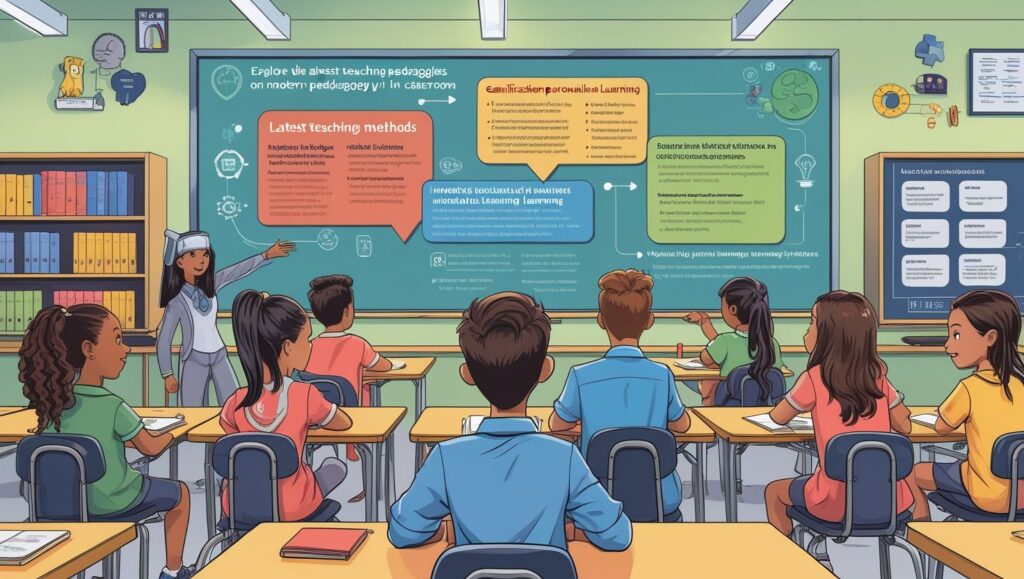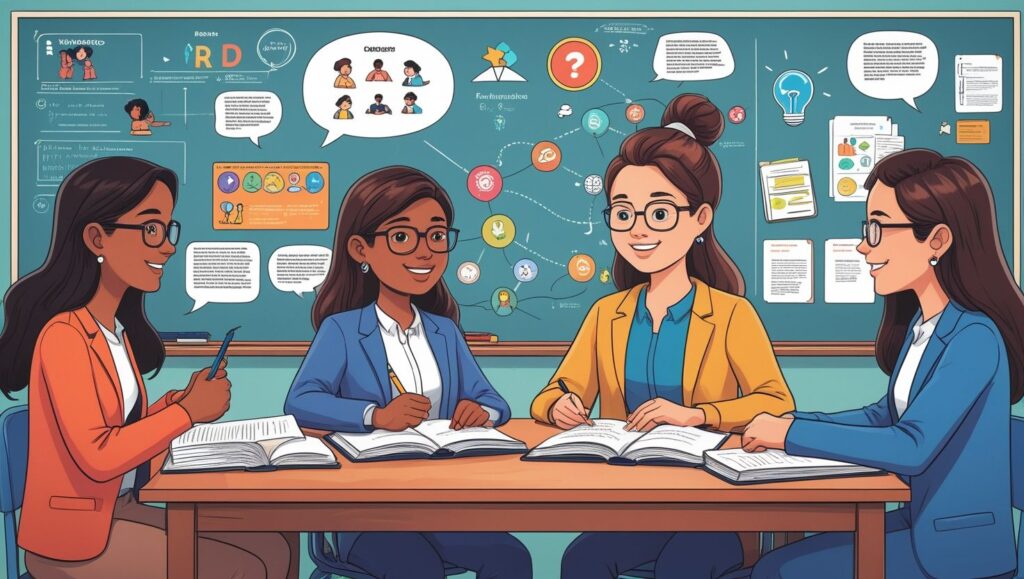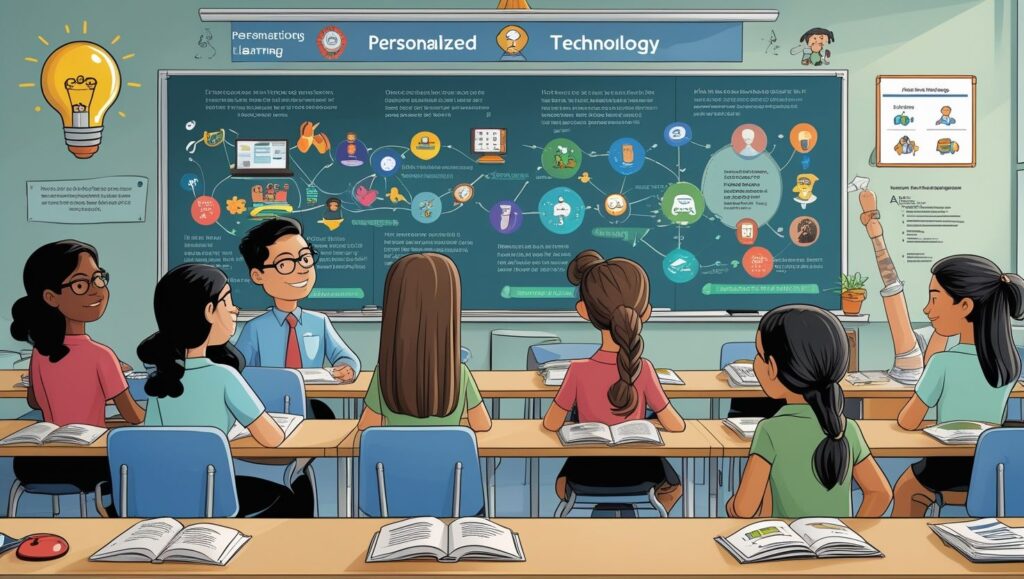Introduction
Latest Mode of Teachings in Education, Education has always been a driving force for social progress. In recent years, new approaches have transformed the way teachers deliver knowledge and the way students learn. These latest modes of teaching are based on research, technology, and interactive strategies. They focus on developing critical thinking, creativity, and problem-solving instead of relying only on memorization. Additionally, teachers are now facilitators who guide students through active participation rather than simply giving lectures.
With the rapid advancement of digital tools, classrooms are becoming more dynamic and flexible. Moreover, students are gaining access to resources beyond textbooks, such as online libraries, videos, and global discussions. Therefore, the role of modern teaching methods is essential in making education inclusive and meaningful. They not only make learning more engaging but also prepare learners for the challenges of real life. In this way, new teaching modes are connecting knowledge with practical applications while improving skills needed for future success.
Digital Learning Platforms
One of the most significant developments in education today is the use of digital learning platforms. These include online classrooms, interactive portals, and mobile applications that allow students to learn anytime and anywhere. Because digital tools are flexible, they help students progress at their own pace. Teachers can also provide instant feedback through online assessments and discussion boards. Additionally, digital platforms connect learners with global resources, offering a wide range of videos, simulations, and readings.
This diversity allows students to experience different perspectives and approaches. Furthermore, digital classrooms help in addressing individual learning needs, since lessons can be customized. They also encourage students to take responsibility for their own learning journey. While traditional classrooms are still valuable, digital learning expands opportunities beyond physical boundaries. It makes education more inclusive by reaching students in remote areas. Thus, the integration of digital platforms ensures that education keeps pace with modern technological trends while creating a more engaging and collaborative environment.

Flipped Classroom Model
The flipped classroom model is another modern teaching method gaining wide acceptance. In this approach, students are introduced to learning materials before class, usually through videos, readings, or online lectures. When they come to class, time is spent on discussions, problem-solving, and collaborative tasks. Therefore, the classroom becomes a space for active participation instead of passive listening. Teachers act as facilitators, guiding students through exercises and answering questions.
This method allows learners to control the pace of their initial study, giving them the opportunity to review content multiple times. Moreover, classroom time is used more productively because students already have background knowledge. The flipped model promotes critical thinking, teamwork, and communication skills. It also reduces pressure during class hours since students feel more confident when they are prepared. In addition, teachers can focus on areas where learners struggle, offering targeted support. Consequently, the flipped classroom bridges independent learning and interactive experiences, making education more engaging and effective.
Project-Based Learning
Another latest mode of teaching is project-based learning, which emphasizes real-life applications of knowledge. In this method, students work on projects that require research, collaboration, and creative problem-solving. For instance, they may design a model, conduct experiments, or prepare a presentation based on a real issue. This approach connects classroom knowledge with practical use, which motivates learners to stay engaged. Moreover, projects encourage teamwork because students often work in groups to achieve a common goal.
Teachers also serve as mentors, providing guidance rather than direct answers. As a result, students develop independence and responsibility in managing their tasks. Additionally, project-based learning enhances communication, time management, and leadership skills. It also allows learners to see the relevance of their studies in the real world. This method prepares students for professional environments where problem-solving and collaboration are crucial. Hence, project-based learning makes education more meaningful while fostering creativity, innovation, and practical understanding.
Gamification in Education
Gamification is an innovative teaching strategy that uses game-like elements in learning. Teachers apply points, rewards, levels, and challenges to make lessons more exciting. This approach increases motivation because students feel encouraged to achieve goals and compete in a healthy manner. Furthermore, gamification makes learning fun, which reduces stress and builds a positive attitude toward education. By integrating storytelling and interactive quizzes, teachers keep students focused for longer periods.
Additionally, learners gain instant feedback, which helps them recognize strengths and improve weaknesses. Gamification also supports active participation, as students are eager to take part in activities. Beyond motivation, it builds problem-solving and decision-making skills, since challenges often require creative solutions. Moreover, it encourages collaboration when games are designed for group activities. As a result, learners develop teamwork and communication abilities alongside academic knowledge. Therefore, gamification not only transforms classrooms into enjoyable spaces but also improves retention, engagement, and skill-building in the modern learning process.

Collaborative Learning Methods
Collaborative learning is a teaching mode that emphasizes teamwork and shared responsibility. In this method, students work together on assignments, discussions, and problem-solving tasks. They learn from one another by sharing ideas, asking questions, and comparing perspectives. Consequently, classrooms become interactive environments where every voice matters. Teachers encourage cooperation by assigning group projects and peer-to-peer learning exercises.
This method strengthens communication skills and builds confidence as learners present and defend their opinions. Additionally, collaborative learning promotes respect and empathy because students must consider different viewpoints. It also reflects real-life situations where teamwork is essential for success. Furthermore, working together helps learners develop leadership skills and conflict resolution strategies. Teachers benefit as well, since collaborative tasks reduce the pressure of individual assessment and allow observation of group dynamics. Thus, collaborative learning creates a supportive environment where academic growth is combined with social and emotional development. This approach prepares learners for both academic success and community involvement.
Artificial Intelligence in Teaching
Artificial intelligence has entered classrooms as a powerful tool for personalized learning. AI systems analyze data to understand student strengths and weaknesses. They provide customized content, recommend practice exercises, and even predict learning outcomes. Consequently, students receive targeted support that matches their needs. Teachers also benefit because AI tools handle repetitive tasks like grading and assessments. This allows educators to focus more on interactive teaching.
Moreover, AI chatbots and virtual assistants answer student queries instantly, creating a continuous learning process. AI also supports adaptive testing, where questions change depending on performance, ensuring fair evaluation. Furthermore, virtual tutors and simulations make learning more interactive and accessible. Although AI cannot replace teachers, it enhances their abilities by saving time and offering deep insights. It also encourages inclusivity by providing accessibility features for students with disabilities. Therefore, artificial intelligence represents one of the most advanced modes of teaching, combining technology with human guidance for effective education.
Blended Learning Approach
Blended learning combines traditional face-to-face instruction with digital methods. In this approach, students attend regular classes but also use online resources for further study. This balance allows them to benefit from direct teacher interaction as well as independent exploration. Blended learning promotes flexibility because students can revise lessons at their convenience. Teachers also integrate multimedia, such as videos and interactive quizzes, to reinforce concepts.
Additionally, it supports differentiated instruction since learners can progress at different speeds. By combining online and offline methods, students develop digital literacy while still enjoying classroom discussions. Furthermore, blended learning improves teacher-student interaction, as teachers spend more time guiding rather than delivering long lectures. It also reduces classroom pressure by allowing students to practice outside school. Importantly, this approach provides a safety net during emergencies, ensuring learning continues through digital platforms. Thus, blended learning is an effective model that combines the best of both traditional and modern education systems.

Virtual Reality and Augmented Reality
Virtual reality and augmented reality are modern teaching tools that bring learning to life. It reality immerses students in simulated environments, such as historical events or scientific experiments. Augmented reality adds digital layers to real-world objects, making lessons more interactive. These tools transform abstract concepts into visual experiences, which improve understanding and memory. For instance, medical students can practice surgeries in a virtual environment before working on real cases.
Similarly, geography students can explore 3D maps and landscapes without leaving the classroom. Furthermore, these technologies encourage active engagement because students can interact with content directly. Teachers also find them useful for creating memorable lessons that capture attention. Additionally, VR and AR promote inclusivity by offering customized learning experiences for different needs. Although expensive, they are becoming more accessible with technological progress. Therefore, virtual and augmented reality represent the future of teaching by blending imagination with education, making learning exciting, practical, and impactful.
Conclusion
The latest modes of teaching in education highlight a shift from passive learning to active participation. Methods like digital platforms, flipped classrooms, project-based learning, gamification, and collaborative strategies are making classrooms more interactive. Similarly, advanced technologies such as artificial intelligence, blended learning, and virtual reality are reshaping how students engage with knowledge. These approaches not only improve academic performance but also develop skills such as creativity, teamwork, and problem-solving.
Moreover, they make education inclusive by providing flexible options for diverse learners. Teachers are becoming facilitators who guide students toward discovery and critical thinking rather than simply transmitting information. Transitioning to these modern strategies requires training and resources, yet their long-term benefits are undeniable. Education is no longer limited to textbooks and lectures but has expanded into dynamic, engaging, and global experiences. Therefore, adopting the latest teaching modes ensures that learners are better prepared for the future while keeping the spirit of knowledge alive in meaningful ways.

It’s refreshing to find something that feels honest and genuinely useful. Thanks for sharing your knowledge in such a clear way.
You bring a fresh voice to a well-covered topic.
You bring a fresh voice to a well-covered topic.
Bosphorus sightseeing tour Excellent English and clear explanations. https://thebrooklynbazaar.com/?p=6374
Great job simplifying something so complex.
This topic really needed to be talked about. Thank you.
lgwte3
nf2f6n
Ihave read so many articles concerning the blogger lovwrs
but this article is in fact a fasstidious paragraph, keep it up. https://Glassi-Greyhounds.Mystrikingly.com/